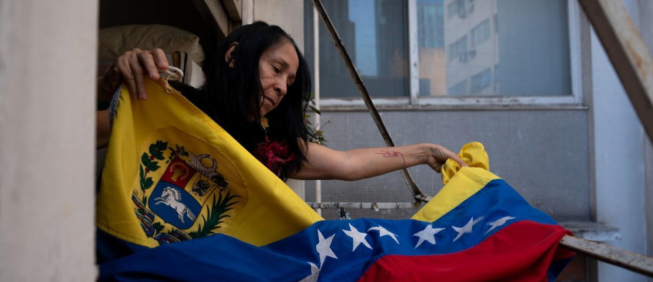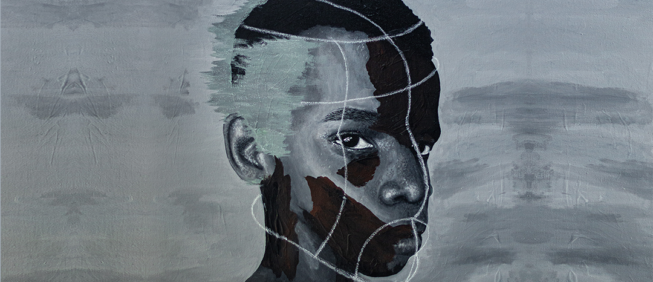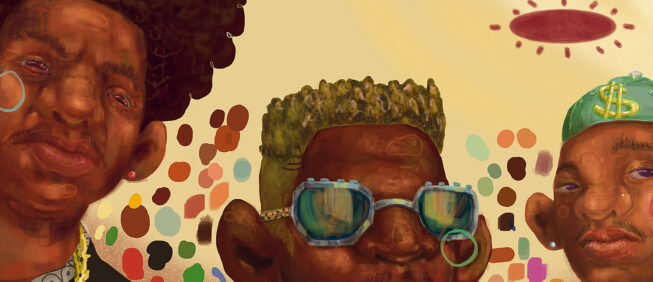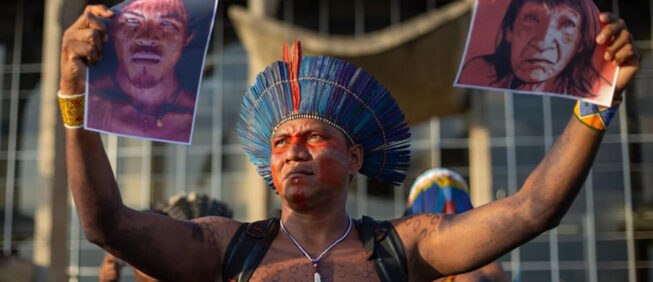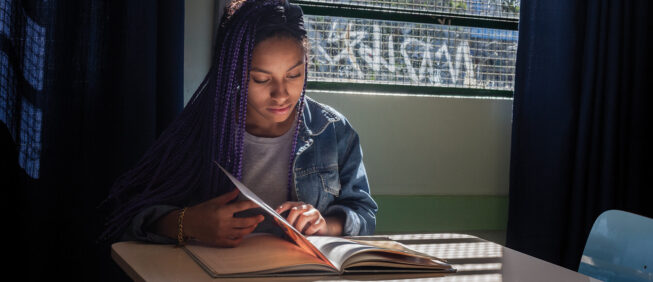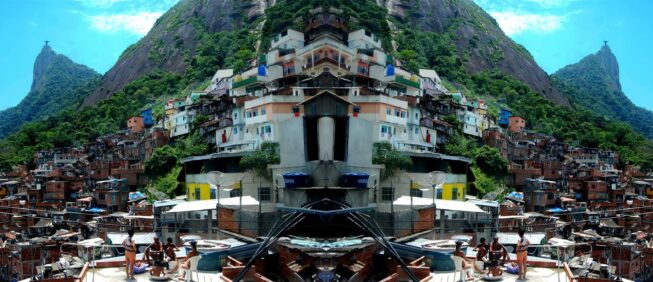The Molenbeekois and their Going Beyond a Stigma
Johan Leman
| BELGIUM |
19 de May de 2018
Abstract
The Brussels district of Lower Molenbeek faces a number of structural problems, from high unemployment rates to overcrowded housing conditions, drug dealing, etc. Its inhabitants carry a stigma associated with ‘failure’ and with conservative, and even radical, Islam. The neighbourhoods themselves are considered unsafe and dirty places. This article takes a strongly praxis-based approach, exploring six different concrete examples of actions taken by the people of Molenbeek that lead to emancipation and empowerment and that have the potential of making outsiders reconsider the image of the district, going beyond the stigma. Each initiative is discussed in some detail to demonstrate how it originated, which aspect of the stigma it counters, and how it manages to do so. A positive, constructive approach and a shared (realistic) dream will be shown to be a common factor among the various initiatives.
Can people who live in a stigmatized periphery, starting from their own current practice, find the force to realize their emancipation? Can they transform and transcend a negative brand that weighs on their environment and on themselves, to their own benefit and also to a better image in the outside world? Not all peripheries and stigmas are the same. Some districts are clearly more deeply and negatively branded than others. Sometimes the branding also has a deeper anchoring than in other cases. No doubt there are other places that are much more stigmatized and are, objectively speaking, more difficult places than Molenbeek.
I restrict myself here to what I see as marginality and brand in Lower Molenbeek, a place that has been branded and stigmatized worldwide after the terrorist attacks in Paris (13.11.2015) and Brussels (23.03.2016), and nationally since much earlier. I want to discuss, in a concrete way, both Molenbeek’s stigma and its overcoming of stigma. I start from scenarios that find their origin, or at least their feeding ground, at grassroots level in people’s everyday lives and experience.
‘Lower Molenbeek’ as a stigmatized environment
It seems useful first to briefly introduce a Brussels municipality such as Molenbeek. What one calls the Brussels Region is a cluster of 19 municipalities, of which Molenbeek is only one, and Lower Molenbeek is only one part of the municipality. There is also a more wealthy middle-class Upper Molenbeek. What one means in the media by branded Molenbeek is Lower Molenbeek: four peripheral popular districts, that already at the beginning of the 19th century were workers’ districts, at the northern side of the canal that crosses the Brussels region.
Since the terrorist attacks in Paris (2015) and Brussels (2016) hundreds of journalists have come to Molenbeek. Most of them were surprised. They expected a slum district, but Molenbeek is not. And even if Lower Molenbeek is visibly much more marginal than Upper Molenbeek, it is not a bidonville.
The problems are not lacking, sure. The four districts in Lower Molenbeek are what may be called a ‘gate city’, meaning that it is place for newly arrived migrants. Many low skilled and poor new migrants look for an apartment in Lower Molenbeek, which has become a place that is abandoned after some time by the more successful migrants. The risk here is that a culture of ‘absence of success’ and even of ‘failure’ becomes installed. In too many families, no one has found work in the regular labour market.
The unemployment rate is much too high, including among youth. And Molenbeek has a very young population, with half of all residents under 29. Too many families live on superficies that according to Belgian norms are much too small: half of the apartments are less than 55m². Molenbeek is also situated on a drugs line between the central Rif in Morocco and the Netherlands. There is much drug dealing as a strategy to earn money. So Molenbeek may become a place for a lot of young delinquents and for deviant sub-cultures, supported also by the internet. And there is a tendency toward North African/Islamic monoculture in the public space.
How to explain that militant jihadism could develop so well in Lower Molenbeek? There is, first of all, the proximity to France: one hour by train to Paris. It is also the most Maghrebin environment in Brussels, with a lot of new arrivals and departures, so not so much social control after all, except within established networks. The Brussels region itself, and Molenbeek as part of it, is institutionally very fragmented, with many different political authorities that all feel competent for only one, but always different, small part or aspect of the social reality.
It means that there are some blind spots, or call it black holes, where informal subcultures can develop, for instance also jihadi-salafi subcultures in the pleats and shadows of ‘normal cohesive social life.’ So, some militant former jihadi GIA-militants who fought in Afghanistan could hide there and recruit for jihadism among youngsters for jihad’s sake. As a result, Lower Molenbeek and its youth have been branded as radical and dangerous.
Interesting is what one of these youngsters, now a young adult, who is one of the co-founders of a project that I will present, says about himself and the youngsters who adhere to his project (named MolenGeek).
“In Molenbeek the youngsters (of his project, jl) have to work twice as hard. It is difficult for everyone to find a job, but for them it will be much more difficult still. They didn’t study, have no experience, cannot be supported by a network. And, last but not least, they are from Molenbeek. (…) They are youngsters without a job, who encounter discrimination, and who, in many places, are not welcome. They are humiliated as good-for-nothing by their own family. The police controls them constantly. There is an accumulation of problems.”1Ibrahim Ouassari, co-founder of the project ‘MolenGeek’, in newspaper De Tijd, 30.12.2017:14-15
Among many youngsters living in Lower Molenbeek, there is a strong conviction that being resident in Molenbeek is a very negative factor when applying for a job. I think it is true. They are conscious that when they went to school in Molenbeek, this really is not the best preparation for later studies. If their name sounds Islamic and/or Moroccan, again it is something that puts them in an unfavourable starting position. That is what they feel, and again, I can understand it. In too many cases, there is some truth in it.
Their reactions can go in different directions. Some youngsters lift up their head and decide to go for it, convinced that they will win the challenge. Others say that they prefer to leave Molenbeek and to have some address elsewhere so that they can start from a better position. Still others shrug their shoulders and play with the idea that it will be possible for many years to come to earn some money via drugs dealing or doing some informal or illegal jobs. Finally, there is also a group that withdraws completely, turning to religious fundamentalism and creating their own hierarchy of moral and religious values, norms and practice, believing it to be superior to the values of the environment.
What is striking is that most Molenbeek attackers in Paris and Brussels originally were part of the category of drugs dealers. By the way, some of them never left for Syria. Many of those who did leave for Syria were converted to jihadi Salafism via recruiters adhering to the fundamentalist groups.
Where should we situate the above situation inside a stigmatization theory as developed by Erving Goffman (1963)? Someone feels stigmatized if (s)he feels strongly and unfairly identified with a bad reputation, and thus has become negatively branded as someone and for something that (s)he really is not, and this is not only as a question of personal feeling but usually also a reality.
Stigmatization may happen based on someone’s physical characteristics, character or his/her identification with a group. If the question is if the districts in Lower Molenbeek suffer from a stigma as described by Goffman, then the answer is positive. May inhabitants, and youngsters in particular, living in Lower Molenbeek suffer from some stigma? Yes, and most of them find it unfair. Some may show some understanding, but even they see it as a form of injustice done to them.
The Molenbeek stigma is inspired by three elements: the neighbourhoods are judged to be unsafe and dirty; the predominant religion (Islam) is considered quite fundamentalist and not adapted to integration; and the majority ethnic provenance (Moroccan from the Rif) is seen, in the Molenbeek case, as unfriendly to women and intolerant to ‘otherness.’ I absolutely do not say that this is the case or that this is the truth.
I also know that non-Muslims who live there are often much more nuanced. But it is the perception in the mind of people who do not live there and they are the ones, very often, who are in a position of responsibility in the labour market or elsewhere. The Molenbeek inhabitants may also be suspected of two negative personal characteristics: an unwillingness to make the efforts necessary to succeed in the regular labour market and a proneness to radicalization.
As already described, someone feels victim of a stigma if they perceive themselves as similar to the others, but know at the same time that the others see them as someone “different” (where different has a negative connotation). Molenbeek youngsters already carried a stigma before the attacks. After the attacks, the notion that they were thought to have sympathy for the salafis, jihadis and terrorists added to the original stigma. One of the arguments used in support of this notion in the eyes of public opinion, and unfortunately also of some Government ministers, was that it took so much time before the Molenbeek hiding-place of Salah Abdeslam, one of the Paris attackers, could be discovered.
It becomes a vicious circle. The characteristics of the neighbourhoods may confirm the character of their youth, and the supposed character of the youth becomes the reason for the reputation of the neighbourhoods where they live.
The question that I will address in this paper is: what do I see, from my own experience at the NGO Foyer, an organization that operates at the grassroots level in Molenbeek, in which I am involved, and from some other local associations and initiatives, as interesting scenarios to go beyond the stereotypes and negative branding of Molenbeek, with impact both inside and outside the neighbourhoods? In answering this question, I will avoid all wishful thinking and strictly refer to what I see as functional. The focus will be on the initiatives that start from grassroots level and, wherever possible, from the initiatives and experiences of the inhabitants - principally the youngsters themselves.
Concrete scenarios to go beyond stigma in Molenbeek
I will shortly describe six examples of initiatives that I see here around me in Molenbeek and that I experience as leading to or at least supporting de-stigmatization.
- There are very talented young men and women who succeed in a brilliant way in becoming successful in their career and at the same time becoming famous outside Molenbeek as well, through the media. Surely, when these men and women continue to express their belonging to the Molenbeek community and show some pride and gratitude to their family and environment, they may become role models and incentives for the local youth. Locally and in public opinion, they may become cultural ambassadors of their districts.
- There are youngsters who turn their school failures into a dynamic of creative entrepreneurship in the formal economy and continue to do that based in Molenbeek.
- The Pakistani community, one of the more recently established immigrant communities in Belgium and certainly also in Molenbeek, has its own sports traditions and its presence provides a timely opportunity to give an impetus to cricket, a relatively new sport in Belgium, not yet widely practiced, even if it is well-known and highly estimated.
- There are initiatives that attract people from outside Molenbeek and outside Brussels because they offer something genuine and relatively difficult to find elsewhere in Belgium.
In these first four cases the initiative taker sometimes needs a small measure of support or encouragement from people who are better equipped professionally, but surely not more than anywhere else in the case of this type of initiative. In essence, these are initiatives at grassroots level. Without the moral and intellectual power of the inhabitants in such districts as Lower Molenbeek, it simply would not happen. I add to these four profiles, based on sports, arts and a sense of entrepreneurship, some other initiatives where the professional framing, through the intervention and support of associations working at grassroots level, may be a bit more important. However, here again it will be the commitment of the inhabitants themselves that is fundamental and decisive.
- One can create something truly original with genuine rhythms and sounds touching the imagination, yet remaining associated with Molenbeek. This has been done by Fanfakids, a children’s and youngsters’ brass band.
- There may be inhabitants who are completely non-professionals, for instance older women, who are prepared to participate as principal actors in a professional movie that aims to show their emancipation process to a large audience, in a light-hearted, humoristic way, under the direction of a professional producer.
These are six scenarios that show how in Molenbeek people anchored in experiences at grassroots level want to go and can go beyond the stigma of their district. Let us look at the examples one by one.
Individual talent that does not deny its provenance
Most striking in Molenbeek is that it features talents in areas such as sports, arts (theatre and film), science and entrepreneurship; this means that it is quite plural. It is true that protagonists in some success stories received some outside support at some point in their career, but surely not more so than other youngsters who have become successful. Most of the effort and the fundamental incentive was theirs, either their own or stimulated by their family and triggered by an association, a teacher or another professional.
In the world of sports, unsurprisingly, martial arts such as kickboxing or karate are very attractive. Yet the successful Molenbeek sports people are youngsters who made their career based on their own force and hard training, and it even brought them to participation in the Olympic Games. They also create their clubs, open their training halls and may become a role model for a category of youngsters. Mohamed Boulef became kickboxing world champion.
Monder Rizki originally belonged to a small group of street youngsters, took part one day in a training session of Atlemo, a Foyer athletics club, and decided to become a 5,000 and 10,000 m runner. It brought him in It brought him in a short time to the Olympic Games of Beijing and Athens. Such athletes are ‘accessible’ role models for many youngsters, since they remain in Molenbeek, even if it is obvious that their sports career could benefit from living in a less polluted place with clean air and better equipment. They give a double message to their peers: “it is difficult for us to leave Molenbeek, since we feel alienated elsewhere,” and “you can really succeed in life living in Molenbeek.”
A sportsmen such as Vincent Kompany, born in a neighbouring socially stigmatized district, top soccer player in UK’s Premier League, is also an attractive model, but he has become less close and less accessible. It is very valuable that someone like Vincent Kompany in some of his interviews emphasizes the positive qualities of the Molenbeek youth and invests personally in Brussels’ soccer projects for youngsters.
Examples from the world of arts can be found mainly in the film scene, for instance Adil El Arbi and Billal Fallah, filmmakers. They started their career with the movie “Black”, which earned them an invitation to Hollywood to work on further projects.2See their series, “Bad Boys” Their work is inspired by some realities and still much more fantasies around life in Low Molenbeek.
Both young directors followed in the footsteps of another young Belgian-Moroccan filmmaker, Nabil Ben Yadir, who made a hit movie with “Les Barons,” a film that represented in a pleasant but also touching way the choices that many Molenbeek youngsters face when staying in Molenbeek, from drugs dealing to studying. Analyzing over time, one sees that the first young directors, actors and producers of the Molenbeek community were active in the theatre, bringing sketches based on Molenbeek life.
One can safely say that those theatre producers completely relied on their own means, and earned their first money with performances in front of a very local audience, while slowly, step by step, also creating a following outside Molenbeek. In this sense, the filmmakers enjoyed more support, first from a number of established Belgian professional actors who wanted to give them their support, and later also from outside Belgium. But it does not diminish their personal input, motivation and commitment. In fact, this kind of support is necessary for everyone who wants to have some measure of success in the international film world.
Thirdly, there are a number of successful young women at academic level, who are noticed from time to time in the media, because of their career in politics or in science. At those moments they do not deny their provenance – and this is important. Fadila Lanaan, whose mother followed a literacy course in Foyer’s women’s house Dar al Amal, and who herself frequented Foyer’s youth centre Foyer des Jeunes as a child, became minister of Culture for Belgium’s French Community.
The app Sejaal was developed by a migrant. She hopes to facilitate quality education in the Near East and North Africa. She has been invited to Silicon Valley. These women have become role models for many youngsters who conclude that they can also at least start university studies and become successful in life, academically or in another way. One cannot help but guess that over time, girls may become more successful than boys at school in such districts.
Youngsters who convert their school failures into entrepreneurial dynamism
I see a second scenario realized in a digital entrepreneurship project such as MolenGeek. What is it about? Youngsters, also low-skilled ones, meet from Friday evening until Sunday evening to technically develop their digital projects and to socialize in a startup culture.
One of the co-founders of the project is a young guy who failed at school and even gave up. He speaks openly about it, without complexes. Below is a quote from one of his interviews:
“Till today I cannot explain very well why things went wrong for me, since primary school was okay for me. But suddenly school didn’t interest me anymore. I was not happy and didn’t study anymore. I acted the clown in the class. Many teachers talked to me at that moment, surely with very good intentions, to tell me that I was wasting my future. (…) One sent me to professional school. But there it also went wrong. (…) Now I very often go to meetings to discuss with youngsters and every time their question is: “What should we study to do what you are doing? It’s difficult to find an answer. I never studied. I can only say: try and continue to try. (…) One in five youngsters in Brussels leaves school without a diploma. Still another one out of five doesn’t go to school, is not in training and doesn’t look for a job. They are known as NEETs. Not in Education, Employment or Training. MolenGeek is full of them. 80 percent of our youngsters is NEET. If you ask me: ‘Why MolenGeek?’ my answer is: ‘To offer them a perspective’.”3Ibrahim Ouassari, co-founder of MolenGeek, in an interview with Sofie Vanlommel, in De Tijd, 30.12.2017
After being unsuccessful in his job applications, Ibrahim Ouassari discovered the digital world and by now he has become passionate about it. He created a small enterprise for youngsters who dropped out of school, but feel attracted by entrepreneurship and the WWW. His point of view is that the youngsters, also in districts like Lower Molenbeek, all want to participate in the virtual world of the WWW. He stimulates them to make apps and to learn the job, practicing it and discovering a new passion: to become an entrepreneur, in search of a new niche on the digital labour market.
After the Paris and Brussels attacks, authorities supported him financially (offering €500,000) and socially, promoting him and his initiative as an example in the media, trying to convince Molenbeek youngsters that they are not a ‘lost generation,’ abandoned by society. The project has definitely had a positive impact on public opinion outside Molenbeek as well.
A Molenbeek boost for a new sport
Among the more recently established communities of Molenbeek there is a vibrant Pakistani community. Almost every day after school one can see Pakistani youngsters playing cricket at the central square in front of the church, with inept means. In Belgium, cricket is known and appreciated but barely practiced. There is no cricket tradition. Recently a cricket federation was founded, but it remains quite unknown, since it has no popular basis. At this point, Pakistani youth in popular districts such as Lower Molenbeek have the potential to give this new sport a boost and play a part in its development, reaching far outside Molenbeek.
In the Foyer approach the sports coordinator of the association has the task of entering in contact with these youngsters and the Pakistani community to propose a model of self-organisation, with club structures, and of mediating with the municipality, not only to make indoor and outdoor cricket possible, but also to make a programme for recreational and competitive cricket in Molenbeek. Undoubtedly, in a very short time this will become one of the strongest cricket clubs in Belgium.
To offer non-Molenbeek people a unique, positive, local Molenbeek experience
One can try to exploit certain very positive characteristics of the complex mosaic called Molenbeek, which normally remain hidden since the logic in the media is to focus on the conflictual. Such a positive initiative can be conceived as a yearly event or as a permanent institute. I will give two examples of an event, followed by two examples of ad hoc-created institutes, supported and grounded in the practices of the inhabitants.
An annual edifying interreligious concert with input of Molenbeek locals
The four districts in Lower Molenbeek are very multi-religious. It is striking that the communities do not know very much about one another’s places of worship. But the non-Molenbeekois still know much less about it. The rich reality is that there are various Islamic Sufi brotherhoods, a mosaic of Christian Pentecostal African and Roma churches, catholic and orthodox communities, and so on. The reality also is that in some of these communities there are choirs that repeat many times in a week and attain an interesting level of quality but remain unknown.
Each year Foyer invites some of them to a central church of Molenbeek to compose together a repertoire that frames the principal act of a prominent singer. The result is an interesting evening programme that has become a tradition in Molenbeek, attracting an audience coming also from outside Brussels. Through such events, the Molenbeek church may become an interesting place, a positive brand, a space in which people can experience a high quality aspect of a local reality.
A yearly run
Still more so after the Paris and Brussels attacks than before, Molenbeek is perceived as unsafe, a dangerous place, one that people often visit primarily out of curiosity and as a form of disaster tourism. Foyer tries to change this perception of Molenbeek by various means, one of them being the organization of “Foyer Jogging,” an annual run through the commercial streets of Old Molenbeek, on a Saturday afternoon. The race is conceived in such a way that participants experience that women can run safely in a sports outfit, wearing a shirt and short pants, in a district that has the reputation of being be radicalized, along with local women, who will often wear their headscarf while running.
The organization of a yearly interreligious concert as well as of a yearly run in the most stigmatized areas of Lower Molenbeek is part of a Foyer strategy to support a positive requalification of these districts, with an impact on both inhabitants and on non-Molenbeekois. People discover that it is true that there may be islamist fundamentalist Muslims living there, but that they nevertheless are not the dominant category, surely not in public space.
Bel Mundo
At the border of Molenbeek an initiative was taken from outside to create a museum called MIMA: Millennium Iconoclast Museum of Art. It presents itself as “a museum of visual arts for the general public, determined to make a contribution to this empathetic, iconoclastic, collaborative, participatory and transversal cultural impetus that lurks inside each and every one of us and is only asking to come out. The works of art it shows are deliberately free of partitions, combining different worlds freely: music cultures (punk-rock, electro, hip hop, folk…), graphics (graphic art, illustration, design), sports (skateboarding, surfing, extreme sports), the arts (cinema, plastic art, performance, comic strip, tattoo, fashion design) and urban art (graffiti, street art).
Stemming essentially from ‘sub-cultures,’ such as street art, skateboarding, and graphic art, the artists shown attain remarkable recognition, independently from the network of galleries and art centres.” The arts entrepreneurs were clearly interested in Molenbeek as a location, because of its “sub-cultures” brand. Next to the museum, another entrepreneur opened a hotel, that has become quite well visited.
I do not want to present both initiatives as coming from grassroots level and from Molenbeekois. They are initiatives that can better be understood from a gentrification perspective. However, what is interesting is that at the same site a social restaurant has been opened: Bel Mundo. And here we see an entrepreneurial initiative coming from a local association (named Groot Eiland) that creates jobs for newly arrived migrants in Molenbeek, offering them work contracts to take care of the adjacent vegetable gardens, that produce cooking ingredients for the restaurant.
Other newly arrived migrants serve the customers in the restaurant. It is not a typical grassroots initiative, but it shows how some associations try to take advantage of new initiatives to promote the possible input of Molenbeekois – newly arrived migrants in this case – which may have a positive impact on visitors’ perception of Molenbeek.
A small ‘multiculturalism-and-arts‘ museum
In the form of a three-year programme (2017-2019), Foyer is creating a small ‘multiculturalism-and-arts’ museum in Molenbeek, to which some prominent artists but also some talented inhabitants give their support. At the same time the project will try to make Molenbeek’ and Brussels’ multiculturalism empathically understandable. The project is also supported by the local men’s association of Foyer. Here again, it is clear that such an initiative is difficult to start up without a measure of support from professionals and from an association, but it is equally true that it has no chance of becoming successful without the basic support of a large share of the neighbourhood.
The creation and promotion of genuine rhythms and sounds
Fanfakids, a children’s and youngsters brass band
Fanfakids is an initiative of another youth centre, Centrum West-D’Broej. Since 2000, children and youngsters of a stigmatized neighbourhood meet twice a week for repetitions with small drums, bells and sounds from Africa, Latin America and Europe, under the direction of a professional musician. They have created their own sounds and rhythms and introduced them also to the other kids in the youth centre and in the neighbouring schools. As Molenbeek’s Fanfakids they go on trips during the holidays. So far, they have been to the Netherlands, Luxembourg, France, Italy, Switzerland, Morocco, Ghana, Togo and Benin. They are proud of their performances and always identify very clearly with their district.
Inhabitants’ empathetic expression through professional movies
Patience, patience, t’iras au paradis (2014) is a movie produced by Hadja Lahbib. It tells the story of seven older women of Molenbeek (members of Dar al Amal, the women’s house of Foyer). The film received the Iris prize at the Europa Festival in Berlin. The seven women tell about their life, their past in Morocco, their current life in Molenbeek and they show how they have become liberated vis-à-vis many cultural constraints and aspects of social control in their district, without denying their loyalty to their family, the neighbours and the neighbourhood.
They go on holiday together, in a van, to the south of the country where no immigrants come; they walk with Arno, a prominent Belgian singer, at the seaside; they book a flight and go to New York to meet, among others, a young Belgian-Moroccan lawyer, and so on. They do all of that with their own savings and the support of the other women of Dar al Amal. The film was shown at cinemas in Brussels and distributed on DVD. Making such a movie would be impossible without the fundamental support of the women themselves, who are neither professionals, nor experienced actors. As such, it shows a disarming picture of Molenbeek.
Discussion
I described six initiatives, directly taken from concrete praxis in Molenbeek. Why do I call them ‘going beyond stigma’? Molenbeek’s stigma, as pointed out at the beginning, is its being unsafe (therefore Foyer organizes the run), women-unfriendly (again: the run), a place of failure and characterized by a ‘lost generation’ (therefore the individual success stories, MolenGeek and Pakistani cricket), with people who do not want to work (therefore Bel Mundo and MolenGeek), intolerant (therefore the interreligious concert and the Fanfakids), a place where Muslim inhabitants easily radicalize (therefore the movie Patience, patience). This list is not complete. There are a lot of other interesting initiatives.
Of course, Lower Molenbeek needs more than that. It needs an adequate policy at gate city level, with more adapted and success-related schools, with a serious reflection together with the imams on Islam and its messages, an analysis also of the hidden financial flows, related to drugs and arms dealing, but also to the spread of different kinds of Salafism. And civil society and its associations should also focus more on developing proactive programmes, such as education of the youngsters in the digital world and the area of social media.
Better collaboration is necessary to discover where there are ‘blind angles’ and ‘black holes’ where radicalization could develop in the recent past. It is the probable existence of ‘black holes’ (which explains why the hiding place of Salah Abdeslam was so difficult to find) that remains a problem and where actions of destigmatization, such as collective commemoration actions for the victims of the attacks, remain only partially successful.
An initiative that may have had a destigmatizing effect to some extent is a small booklet published by Mohamed El Bachiri, the Moroccan husband of a victim of the Brussels attacks, and a resident of Molenbeek. In « Un jihad de l’amour » (translation: A Jihad of Love, 2017), the author develops a plea for what he calls the only correct interpretation of the jihad, which is Love and positive acceptance of the other.
What is important to understand, is that to go beyond the stigma one needs a dream, but also self-confidence and good, positive friends. To be successful in developing the dream, one should first of all be credible. Putting it in a more theoretical way: it starts with positive social capital, meaning: positive social networking, creating mutual trust and self-confidence among the participants.
Once the positive capital is there – which may easily take some seven years (as is my experience with many projects), because it always involves ‘being there’ and ‘earning trust’ – one may propose a new dream that transcends the border of the group and it is up to the people at grassroots level to become part of that dream and to invest themselves in the new proposed cultural capital. Once the cultural capital has been concretized, new complementary social capital will be created, with again an opportunity for new, complementary cultural capital… and so people develop their own route beyond the stigma.
What is fundamental is to understand that the processes start not top-down, but bottom-up, from first-line being there with the people and listening to them. One needs to listen to local youth, but also the parents, mothers and fathers. In stigmatized neigbourhoods, trust is at the basis of social capital, and social capital is at the basis of emancipatory cultural capital.
It is not a coincidence that it is one of the daughters of a woman who followed a literacy course with one of the volunteering women at Dar al Amal, that became the first Belgian-Moroccan minister of French culture in Belgium. During the literacy sessions, the volunteer continuously insisted with the women about letting their daughters continue their studies. She went to people’s homes to convince the fathers as well. Of course, it is the people themselves who make the effort, but some triggering by associations can have a great impact.
Positive emancipation processes are the best antidote against stigma, even if it is true that it may take some time before the media and also general public opinion are open to following the process. In this respect it is important that also other institutions support the process. Interesting in the Molenbeek case, is that two highly qualified schools, seen even as upper middle class oriented, from outside Molenbeek, decided to open a department in Molenbeek.
Conclusion
The big problems in Molenbeek are youth unemployment, the mismatch between school output and the current demands on the labour market. Furthermore, there is the visible drugs dealing as a way to easily earn money, and the presence of informal preachers at places that I called ‘black holes’ in the districts. And for some youngsters, there remains of course also a ‘no future’ feeling.
Scenarios such as the ones that I described and that are fundamentally grounded and nourished by the commitment of the inhabitants themselves, are necessary. They maintain a climate of possible, realistic dreams that are supported by partial but incontestable successes. They concern mainly initiatives in sports, culture and arts, and entrepreneurship. They are also a demonstration that mutual acceptance and tolerance can be part of the dreams of a district. Stories are spread of successes and role models. They encourage people. They create a space for social, cultural and constructive spiritual capital, not only for spiritual capital that leads to isolation and withdrawal from the world.
With the development of cultural capital and new and bigger initiatives coming from outside (just like MIMA and others), which represent more of a sign of gentrification, there may arise a new challenge. People outside the district notice the improvements and do so at a point at which housing prices are still relatively accessible, and may become interested. As such it is a good sign. However, if housing and land prices increase significantly, some poorer people may be pushed away.
That is the reason why I would absolutely not be surprised if Molenbeek, also Lower Molenbeek, one day, maybe in two decades, should have changed from a bad brand into a completely positive brand. The challenge will be to prevent that the inhabitants who today are the initiators of the positive developments become the victims of such an upgrade. It would not be the first time that a district, stigmatized for years, sees its population change completely, due to positive developments starting from inside and later complemented by investments from outside. I do not want, however, to end on a negative note or warning. In the meantime, the good thing is that the Molenbeekois fight for their self-respect and are ready to mobilize together against stigmatization.

Johan Leman | Brussels, Belgium |
Professor, Anthropologist, President of Foyer vzw
johan.leman@foyer.be
